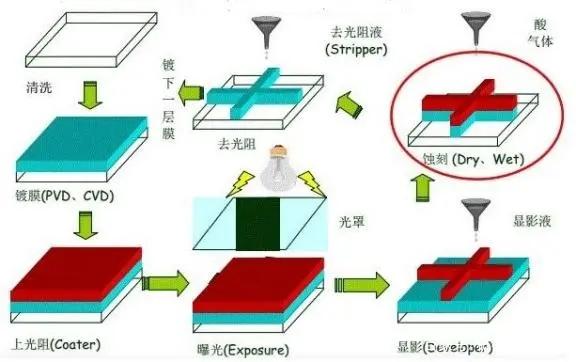
What is metal etching?
Metal etching is a technology to remove metal materials by chemical reaction or physical impact. Metal etching technology can be divided into wet etching and dry etching. Metal etching consists of a series of chemical processes. Different etchants have different corrosion characteristics and strengths for different metal materials.
Metal etching, also known as photochemical etching, refers to the removal of the protective film in the metal etching area after exposure, plate making, development and contact with the chemical solution in the process of metal etching, so as to dissolve corrosion, form bumps or hollows. It was first used to manufacture concave convex printing plates such as copper plates and zinc plates, and is widely used to reduce the weight of instrument panels, or process thin workpieces such as nameplates. With the continuous improvement of technology and process equipment, etching technology has been applied to aviation, machinery, chemical industry and semiconductor manufacturing processes to process precision metal etching products for electronic thin pieces.
Types of Etching Technologies
Wet etching:
Wet etching is to immerse the wafer into a suitable chemical solution, or spray the chemical solution onto the wafer for quenching, and remove the atoms on the film surface through the chemical reaction between the solution and the etched object, so as to achieve the purpose of etching During wet etching, the reactants in the solution first diffuse through the stagnation boundary layer, and then reach the wafer surface, where chemical reactions take place to produce various products. The products of the etching chemical reaction are liquid phase or gas phase products, which then diffuse through the boundary layer and dissolve into the main solution. Wet etching will not only etch vertically, but also horizontally.
Dry etching:
Dry etching is usually a kind of plasma etching or chemical etching. Due to different etching effects, the physical atoms of ions in the plasma, the chemical reactions of active free radicals, and the surface atoms of devices (wafers), or a combination of both, include the following:
L Physical etching: sputter etching, ion beam etching
L Chemical etching: plasma etching
L Physical and chemical composite etching: reactive ion etching (RIE)
Dry etching is an anisotropic etching with good directivity, but its selectivity is worse than that of wet etching. In plasma etching, plasma is a partially dissociated gas, and gas molecules are dissociated into electrons, ions and other substances with high chemical activity. The biggest advantage of dry etching is "anisotropic etching". However, the selectivity of (free radical) dry etching is lower than that of wet etching. This is because the etching mechanism of dry etching is physical interaction; Therefore, ion impact can not only remove the etching film, but also remove the photoresist mask.
Etching process
The etching process varies according to the types of metals, but the general etching process is as follows: metal etching plate → cleaning and degreasing → water washing → drying → film coating or silk screen printing ink → drying → exposure mapping → development → water washing and drying → etching → film stripping → drying → inspection → finished product packaging.

Photochemical etching: metal parts contact chemical solution through plate making, and use double-sided plate making to make chemical grinding achieve the effect of dissolving corrosion, forming concave convex or hollow forming, or use laser cutting to obtain hollow forming metal parts.
Asset metal is a 100% high-tech company from ID to solution, focusing on the application manufacturing of metal parts such as CNC machining, metal stamping and chemical etching.


 +8613538580966
+8613538580966

